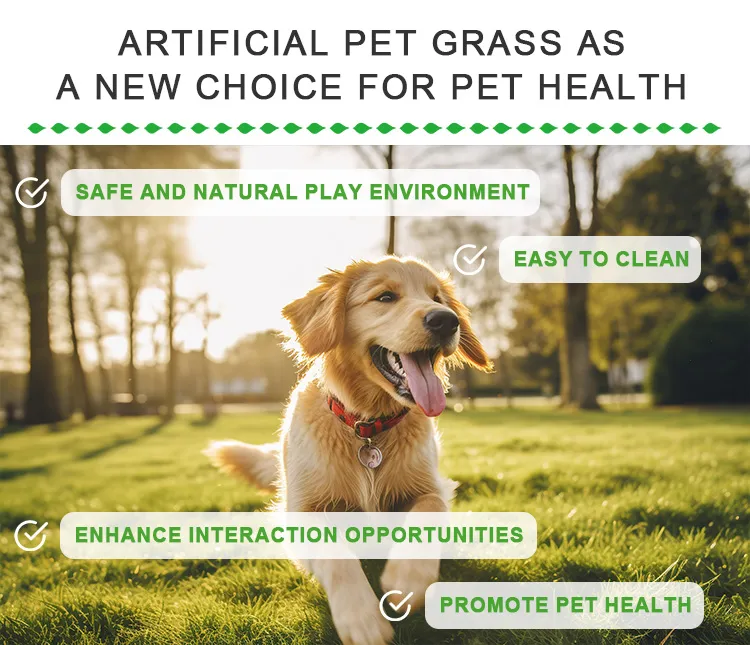
- Afrikaans
- Arabic
- Belarusian
- Bengali
- Czech
- Danish
- Dutch
- English
- Esperanto
- Estonian
- Finnish
- French
- German
- Greek
- Hindi
- Hungarian
- Icelandic
- Indonesian
- irish
- Italian
- Japanese
- kazakh
- Rwandese
- Korean
- Kyrgyz
- Lao
- Latin
- Latvian
- Malay
- Mongolian
- Myanmar
- Norwegian
- Persian
- Polish
- Portuguese
- Romanian
- Russian
- Serbian
- Spanish
- Swedish
- Tagalog
- Tajik
- Thai
- Turkish
- Turkmen
- Ukrainian
- Urdu
- Uighur
- Uzbek
- Vietnamese
Benefits and Features of Synthetic Turf for Football Fields
Dec . 09, 2024 16:52 Back to list
The Rise of Synthetic Turf Football Fields
In recent years, the landscape of football has evolved significantly, with synthetic turf football fields becoming increasingly popular. These artificial surfaces have transformed the way the game is played and enjoyed, providing numerous benefits in terms of performance, maintenance, and accessibility. As we delve deeper into the advantages and trends associated with synthetic turf, it becomes evident why they are gaining traction in the world of football.
Enhanced Performance
One of the primary reasons for the rise of synthetic turf is its ability to enhance player performance. Unlike natural grass, which can become muddy and uneven with inclement weather, synthetic turf provides a consistent playing surface year-round. Players can rely on the firmness of the field, which allows for better traction and stability during play. This consistency not only improves individual performance but also contributes to faster-paced games, lessening interruptions for field maintenance.
Additionally, synthetic turf fields are designed to absorb impact, reducing the risk of injury. This is particularly important in football, where players are frequently subjected to high levels of physical contact. The cushioning effect of synthetic turf can help mitigate the chances of ankle sprains and other injuries that are common on harder surfaces. As a result, teams are more inclined to invest in synthetic venues, knowing they can provide a safer environment for their players.
Reduced Maintenance Costs
Natural grass fields require extensive upkeep, including regular mowing, watering, fertilizing, and pest control. This can lead to considerable costs over time, particularly for community leagues and schools with limited budgets. In contrast, synthetic turf fields require significantly less maintenance. They do not need watering or mowing, and maintenance typically involves occasional brushing and infill replenishment.
This reduction in maintenance not only lowers operating costs but also allows for more playing time. While natural grass fields often become unusable after heavy rain, synthetic fields can be accessed almost immediately, ensuring that teams can practice and play without interruptions. This accessibility enables more games, practices, and community events to take place, fostering a stronger sense of community and engagement in local sports.
synthetic turf football field

Environmental Considerations
One might be surprised to learn that synthetic turf has environmental implications. While natural grass fields are often hailed as more eco-friendly, synthetic turf fields are being developed with sustainability in mind. Many modern synthetic turfs are made from recycled materials, and innovations in infill materials—such as coconut husks or recycled rubber—are becoming increasingly common. Furthermore, the reduction in water use is a significant factor, especially in arid regions where maintaining natural grass can be a resource-intensive endeavor.
However, it is essential that communities consider the entire lifecycle of synthetic turf products, including their eventual disposal. The development of recycling programs for old synthetic turf is vital to ensuring that these fields remain environmentally responsible options.
Growing Popularity
The acceptance of synthetic turf is not limited to professional sports. Educational institutions and community leagues have embraced these fields for various sports, from soccer to lacrosse and beyond. With the growing trend of multi-sport facilities, synthetic turf provides the versatility needed to accommodate numerous activities without compromising quality.
Furthermore, major sporting events have taken notice of synthetic turf, leading to an increase in its use at high-profile tournaments and competitions. This growing visibility helps to solidify its reputation and encourages further investment across all levels of play.
Conclusion
As synthetic turf football fields continue to rise in popularity, they represent a significant shift in how the sport is played and managed. With benefits that include enhanced performance, reduced maintenance costs, environmental considerations, and increasing acceptance at all levels, synthetic turf is likely to remain a staple in the world of football for years to come. As technology advances, we can expect even more innovations in synthetic surfaces, promising players a safe, reliable, and enjoyable game experience.
-
The Benefits of Artificial Turf for Indoors
NewsJul.15,2025
-
How Artificial Grass Suppliers Ensure Quality Products
NewsJul.15,2025
-
Artificial Grass and Pets: A Space for Relaxation
NewsJul.08,2025
-
Balcony & Outdoor Decoration with Artificial Grass
NewsJul.08,2025
-
Best Indoor Artificial Grass for Home
NewsJul.07,2025
-
Best Pet Turf for Dogs: Safe & Durable Artificial Grass Options
NewsJul.07,2025
Products categories









